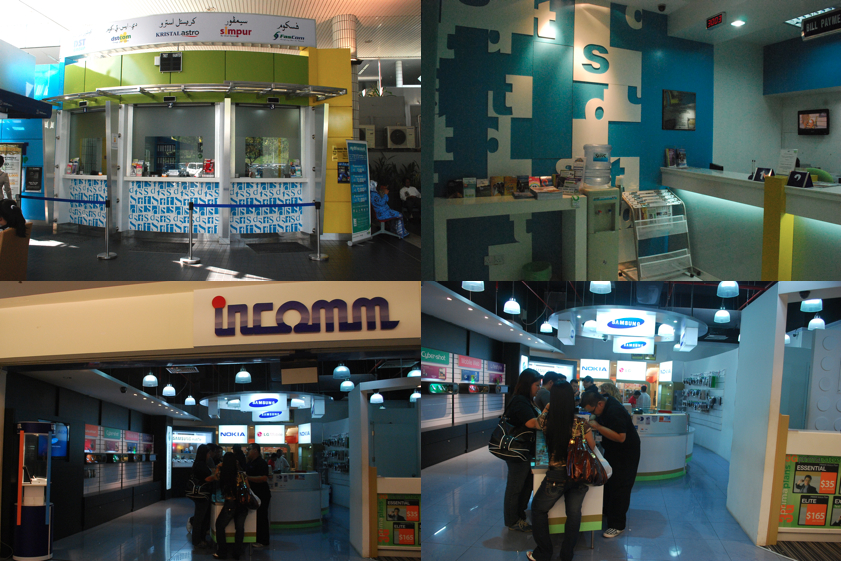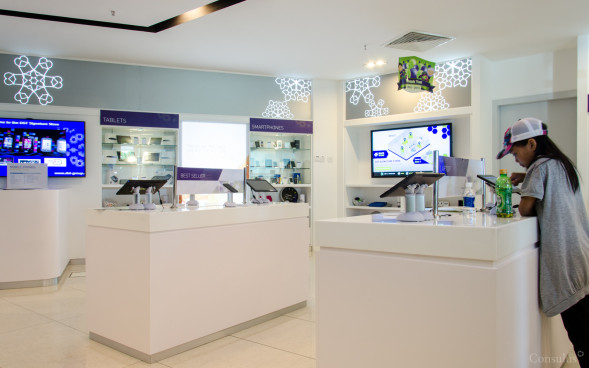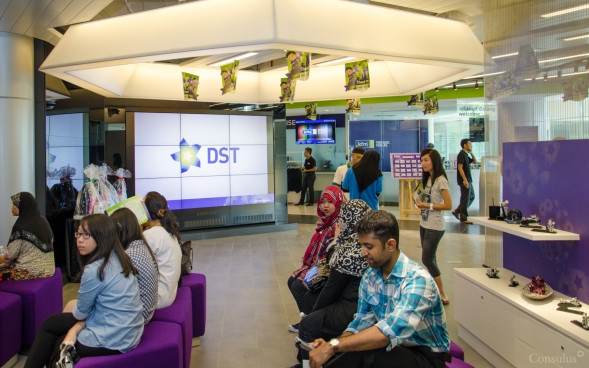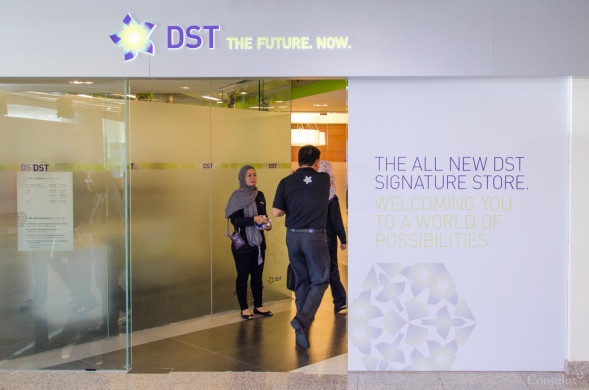(Đọc bài viết bằng Tiếng Việt)
The chef flips his blade and pepper shaker, chops the beef on a hot iron griddle in super quick time. These form part of the experience of eating Teppanyaki. This art form of enjoying barbecued food was created by Japanese chefs since 1945, combining entertainment and great cooking. It is a classic example why the Japanese have been the flag bearers for innovative customer experiences. Though many Asian cultures are known for their personal touch and graciousness, few have been associated with delivering magical service experiences. This becomes a challenge for businesses today, as customers travel widely and have come to expect good service standards. Therefore in order to capture the hearts and minds of customers, Asian firms will need to think creatively.
In today’s world, cultural norms alone will not deliver a unique service proposition. Asian firms need to be mindful not only of their service delivery standards, but also of the infrastructure and experience aspects, to ensure that their brands can compete and exceed their western peers. Certainly, it is necessary to get the basics right and many Asian brands have learnt best practices in order to accelerate their appreciation of global standards. However, after having achieved the basics in terms of service delivery, recovery and management, Asian firms must quickly acknowledge the importance of innovation. The failure to do so means that these companies will still be competing on similar standards without any distinction. Here are three challenges why few Asian firms have been able to design unique experiences.
Do you want to achieve maximum organisational alignment for innovation?
Challenge No. 1: The limits of benchmarking
Many Asian owners tend to deal with customer service problems from a standardisation or training point of view. So the approach tends towards adopting a standard customer service programme, training internal staff and then measuring their performance. The issue with such an approach is that it fails to account for changes in the business environment, the relationship with the customer and career aspirations of the staff. Customer service is a complex science and is multi-faceted in nature, so a one-sided approach will not be effective. Therefore many companies may find that even after implementing standard programmes for staff, they have not gained market share or improved service experiences. A different way of looking at the problem is needed, starting from an honest evaluation of your current relationship with the customer. In our work, we tend to ask clients this question. In terms of what you offer, do your customers view you as a “pharmacist”, “nurse” or “doctor”? (Read more about the difference between the three.) The answers give us a very good gauge of where the brand is and what we need to do in order to help them move up the value-chain through service.

In the eyes of your customer, are you a Pharmacist, a Nurse or a Doctor? PHOTOS: Flickr (Creative Commons).
Challenge No. 2: Changing aspirations of staff in customer service
From emerging nations to global cities, it is increasingly challenging to attract and retain talent for customer service. In emerging economies, especially those that grow rapidly, talent is willing to stay only if there is a viable career development track. Without it, most organisations are only able to attract low quality or non-aspirational staff. Therefore, good talents tend to prefer global brands as they believe that it will offer a better path for personal growth. For many Asian brands, we have found that an emphasis on HR development has made a difference. This also means that an inside-out approach is often needed in order to benefit from any service transformation programme.
Challenge No. 3: Limited tools to change perception and experiences
The demand for better customer service is not limited to brands serving consumers; it affects brands serving businesses as well. With better technology resulting in instant communication, clients demand greater interaction and better experiences. The trend is not towards standardisation, but how to offer smart and surprising forms of service experiences. Now, more data available is to businesses on how customers have engaged with them. So, the question is not about data – plenty is available – but about how we interpret it and offer a surprising encounter to demonstrate dedication and personal care?
All these reasons indicate that if Asian brands were to simply adopt a standardisation approach, they will not be able to attract talent and enhance business advantage. The following are three ideas on how to lead in customer service:
Idea No. 1: Understand and raise your value to the customer
The whole concept of service experience should not be on the basis of meeting expectations but about redefining them. For example, if the customer only views you as a good counter pharmacist and is accustomed to coming to you, only to purchase the medicine that he needs, then it is likely his expectation of you is low. You may have other medical knowledge or capabilities, but because you have never said anything about it, the customer is not aware of what you can do. In order to enhance your value to the customer, you have to redefine the relationship. Even if you managed to improve your service but have not redefined the relationship, your transformation would not bring you closer to the customer.
When we partnered with DST, Brunei’s leading telecommunications company in 2010, this was the challenge. Customers tend to view them as only a service provider. However the ICT sector has seen rapid changes in the last decade and it is now about integrated experiences, as customers prefer a one-stop solution. The silo approach – where different business units offer solutions on their own with their individual retail outlets – was no longer effective. Not only did that approach fail to change their relationship with the customers, it was also costly in terms of asset and talent management. In order to increase cross-selling opportunities, it was important to bring the different services under one roof. Therefore the strategy was to move DST from being a quality service provider to being a hub of experiences. This shift meant that the different business units had to redesign their backend processes to deliver a united proposition. They had to work together in a more integrated fashion so as to enhance their value to the customer. In a nutshell, the retail spaces at DST will no longer be limited to providing services, but becoming a proposer of ideas and experiences, before offering relevant solutions to meet their needs. This redefined the relationship, increased revenue opportunities and raised the value of DST to the customers.

Before its rebranding, the silo approach where DST’s different business units offered solutions on their own via individual retail outlets was no longer effective. PHOTO: Consulus.
Idea No. 2: Re-imagine the customer journey
Redefining the value to the customer also requires changing the service experience. Most of the time, people cannot really tell if you have improved in your service if the experience around them or the process has not been changed. This is a delicate step as you do want to surprise the customers without losing their points of reference where they have been comfortable. We often find that staff are the best collaborators in this kind of service redesign, as they are highly aware of the needs and aspirations of customers. Once the redesign is complete, it is also important to retrain all staff so that they know how to use the various tools. New service experiences also make it easier for staff to perform. At the end of the day, the place where the staff serve is the stage of the brand. Having the right props will help them adopt the right frame of mind, making it easier for them to serve.
As part of the long-term brand roadmap for DST, a new store concept called the signature store was proposed to showcase this integrated approach. It would be a hub where the different units of DST come together. It would showcase technological products, have a DJ booth from their popular radio station, allow customers to sign up packages or pay their bills. The concept would enable the staff to propose different concepts and ideas to customers. To achieve this, the entire customer service experience had been redesigned to achieve this effect. The whole experience had to be considered from the point of view of the user and how to encourage them to discover and enter into conversations with DST staff.
The new approach changed the way DST staff engaged with the customers. It also improved staff motivation as they were no longer just sales or service agents, but partners to the users as they explore the world of ICT solutions.

Modular product shelves that are below chest level, giving a sense of space and interactive digital screens providing shoppers with a quick overview of the latest offerings.

An integrated retail experience for consumers to make bill payments, service their devices or simply get updated on the latest technology available.
Idea No. 3: Redesign career development pathways
At the end of the day, the following maxim matters, “Treat your staff well and they will do the same for customers”. It is important to set up clear pathways for staff who perform and how their performance with customers helps them in their career advancement. Companies with the best customer service in the world also have the best career development processes in place. It is not training, but a sense of dedication to nurture the best talent, that will attract the best to join you. These talent who have a heightened sense of awareness and ownership will then go a long way to generate magical moments for your customers.
With DST, the process was made sustainable as the organisation was prepared to reorganise the departments around the implementation of the signature store. The management took about one year to engage staff, explaining to them the necessity of coming together to strengthen the overall proposition. During the internal brand launch event, the staff even did a skit highlighting how the brand had different faces, which confused the customer. At the end of that skit, the different shops came together and offered a new experience presenting an enhanced value. Therefore this entire process of introducing the new retail experience was not merely an interior design exercise. Everything began from the inside-out, from selling the idea to staff, to its eventual re-organisation, before the concept was finally launched. This journey secured the buy-in from the staff, who ultimately act as the stewards and custodians of the brand experience. Without them as the actors, the magic cannot happen.
Lawrence Chong is the Co-founder and CEO of Consulus. The first version of this article first appeared in print on Ceylon Today, one of the leading newspaper in Sri Lanka as part of a weekly column titled Shaping the World. This version has been further edited to provide another case example which Consulus has worked on.
This article is part of The Columnist, a newsletter by Consulus that offers ideas on business, design and world affairs. For past issues, browse the complete archive.





